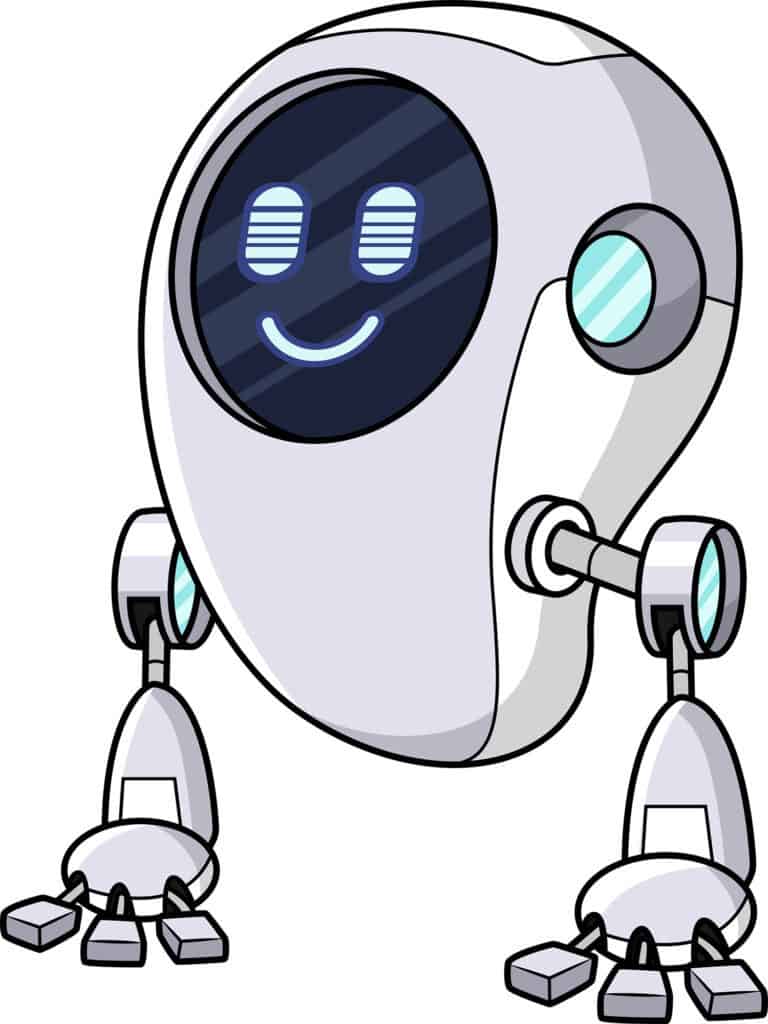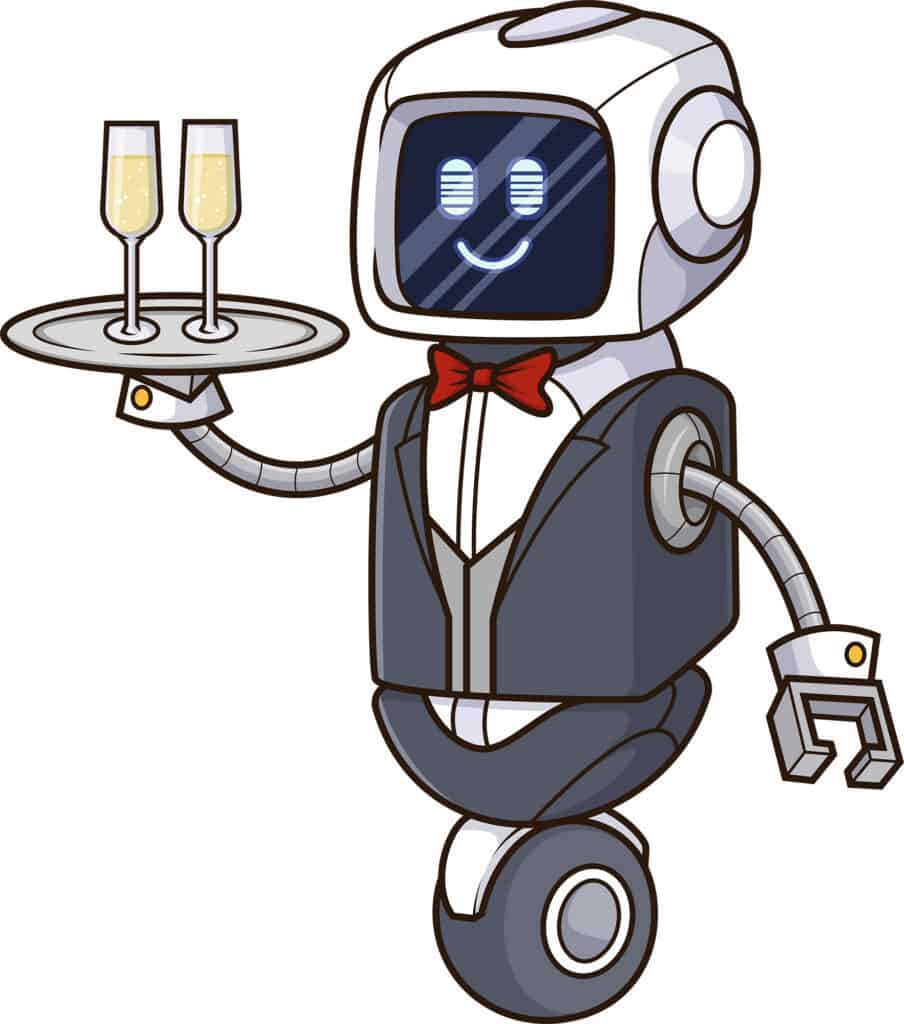
Whenever technology takes big leaps forward, people find themselves questioning the continued relevance of human knowledge and ability. What jobs, skills, and information will become obsolete as people develop technology that can do things for them? Language learning is the most recent item under scrutiny.
Despite AI’s improvements in the areas of language learning and translation, language learning will not become obsolete anytime soon. The constant evolution of language and limited reach of technology make Artificial Intelligence an aid rather than a replacement for language learning.
There is no denying that AI has made leaps in its language learning capability, thanks to the NMT (Neural Machine Translation) method. How good has AI truly gotten at understanding human language? How will it change language learning? Is there a point at which it will replace language learning? Keep reading for all the answers!
Contents
- 1 What Is Neural Machine Translation (NMT)?
- 2 How Good Are AI Translations?
- 3 Can AI Translations Be Relied On for Communication?
- 4 The Problems with Replacing Language Learning with AI
- 5 How Can AI Assist with Language Learning?
- 6 Will AI Ever Become Advanced Enough to Make Language Learning Obsolete?
- 7 The Final Talking Point on Will AI Replace Language Learning?
What Is Neural Machine Translation (NMT)?
To understand why the question of AI replacing language learning is coming up now in 2021, we need to look at the technological advancement that has made AI’s language abilities so much better: Neural Machine Translation (NMT).
NMT is a deep learning system for AI. It involves giving the translation system a lot of source material, which it can then use to develop algorithms. NMT has proven to have much greater accuracy than statistical-based AI. The accuracy of machine translation using NMT is as much as 90%.
This high accuracy level is likely to improve as NMT advances. In light of this, many human translators are already finding their jobs changing. The first draft of translation projects may be left to machines, while the human work becomes focused on correcting errors.
How Good Are AI Translations?
NMT has greatly improved the accuracy of translations, but how accurate is it really? 90% sounds great quantitatively, but how do AI translation stack up qualitatively?

AI Isn’t Great with Context and Connotation
The truth is, it has problems, with the biggest problem with machine translation being context.
The meaning of language and communication often comes from, or at the least is impacted by, the context. However, machines have no way to factor in context to their translating. After all, they are not human. NMT technology works in the following way:
- It translates in sentence-sized chunks, meaning that if you give a translation program an entire paragraph to translate, it will treat each sentence as a separate entity.
- It translates the same word that often appears throughout a long piece in several different ways, unable to determine context.
The importance of context goes beyond keywords. Cultural context is just as important for understanding a translation. When idioms and slang are translated literally, they lose their meaning, but AI is incapable of distinguishing between metaphorical and literal language.

In essence, while AI translations have improved drastically with denotational accuracy, the connotation is still out of a machine’s reach. Human communication relies not only on the definition of words and phrases but also on the cultural context and history of those words, which is something that machines can neither understand nor translate.
AI Can’t Grasp Humor in Language
Humor vexes human translators, and it is something that AI has similar difficulties with translating. More so than other forms of communication, humor relies heavily on cultural context.
Different cultures find different things funny. Recognizing that something is meant as a joke in another language is hard enough. Translating it and keeping the meaning is even harder.
This may not seem like such a shortcoming, but mistranslating humor has the potential for funny or offensive misunderstandings. Jokes and teasing comments can come across badly in translation. In the best case, it simply makes no sense. In the worst case, a sarcastic comment becomes a grievous insult.
AI Does Not Address Nonverbal Communication in Language Learning
In addition, AI translations are unable to translate nonverbal communication. Tone, body language, and inflection are all universal aspects of communication, which give greater and more specific meaning to our oral language. When relying solely on machine translations, the nonverbal aspect of communication is completely lost.
A friendly tone, a charismatic smile, and an authoritative stance are all key parts of any business meeting. AI translations may be able to translate words, phrases, and even sentences accurately, but they cannot capture all of what goes into human communication.
The Definitive Book of Body Language, available at Amazon, is just one of 18 books, written by renowned body language experts Barbara and Allan Pease, to address the intricacies of human nonverbal communication, including the multitude of cultural differences. Human communication is complicated enough for humans; we are not at a point where AI can even remotely understand this!
Can AI Translations Be Relied On for Communication?
At this point, AI translation is undoubtedly good, but they have not reached a point at which they can be the sole translators for interactions between different cultures and peoples. While 90% accuracy is good, 10% inaccuracy is a problem and, in many cases, simply not acceptable. Imagine inaccuracy in the following situations:
- Business Dealings
- Diplomacy
- Holding a Sustained Conversation
This is not to suggest that AI translations are useless. Many translation companies now use AI to do the first draft of translations. AI can now do the grunge work while a human translator adds polishing effects, which can save both time and money for people requiring translations.
The Problems with Replacing Language Learning with AI

Because AI cannot yet replace human translators, it naturally follows that it is not yet in a position to replace language learning either. It simply does not have the capacity to capture and translate everything that goes into human communication.
While this issue alone is enough to explain why AI cannot replace language learning, there are several other reasons that such a replacement would not be ideal.
The Dynamic Nature of Language
Language is not a static thing. It is constantly evolving and changing. New words appear, and older words slip out of usage or emerge again with altered meanings. For an AI translation system to totally replace language learning, regular and extensive updates would be required.
This presents a problem in the same way that a GPS in a car does. If you fail to update your GPS, any buildings changed or built since you first bought the GPS will not be correct. You will be unable to find your way because your device is not aware that the world outside has changed.
AI translations operate the same way. AI relies on whatever information it has been given. If that information is not consistently updated, then your translation system will be outdated and begin giving faulty information.
This means there will always have to be some people who learn other languages, someone to keep the AI updated. Because language is dynamic, there will always be a need for some people to learn languages.
Variations in Language
Have you ever noticed how different the same language can be depending on who is talking? Consider how much similar or the same language can vary based on things such as geography and age.
- People in England and people in America speak English differently.
- People in the Northern United States speak differently than people in the Southern United States.
- High school kids use different slang and words than their parents.
What all this adds up to is a lot of variations within the same language. Dialect and word choice differ not only from location to location but generationally as well. Both audience and speaker thus have a great impact on both sides of translation.
Humans know that we need to adjust our language depending on to whom we are talking. Machines do not. It is not only that AI translation programs need to be programmed with thousands of language variants, but they also need to know when to use which variations.
Most people can easily distinguish between a formal and informal setting. We know when to use slang and when to use our finest vocabulary and manners. AI translation is a long way from having this intuition. Without it, learning a language yourself will continue to be the most effective way to communicate with other human beings.
Limited Access to Technology
Another thing to consider in the relationship between AI and language learning is how long it takes technological advancements to disseminate amongst the world population. Even if AI translation were perfect, it would hardly eliminate the need for language learning if only 2% to 5% of the world population has access to the technology.
Google Pixel Buds 2 are some of the first real-time translation technology aimed at the general public. While the Buds themselves only cost around $180, which is still more than many people around the world can afford, these translation tools for the general consumer require a 6.0 or newer Android device, a Google account, and internet.
In light of these requirements, the Google Pixel Buds 2 have a rather limited range and accessibility to be a true game-changer in human communication. Any translation device targeted toward the public will need to be cheaper and be able to function in more situations to become widespread.
Limited access to technology is a bigger obstacle to AI’s translation potential than many realize. Communication is a two-way street. If one person possesses translation technology, that does not necessarily mean communication can happen.
Because communication requires both people to possess understanding, for AI to change the world language game, the technology will need to be widespread and accessible. Until this technology spreads around the globe, language learning will remain the best way to make yourself understood.
Language Learning Is Good for You

Even if AI could replace language learning, should it? Does language learning have benefits besides the need to communicate with other people? Research in this area has shown undeniably that learning another language has benefits for a person’s overall mental aptitude. In short, learning another language helps your brain.
Because language affects many different areas of the brain, it gives your whole brain a workout, and this workout directly translates to real-world benefits. Consider these benefits of knowing a second language:
- Children who are raised learning a second language tend to do better in school.
- Adults who know more than one language show a lower risk of degenerative brain diseases such as dementia and Alzheimer’s.
- Overall, learning another language has been proven to improve concentration, cognition, memory, listening skills, and more.
Moreover, learning another language allows you to widen your perspectives by seeing how a different culture labels the world. If we stop learning other languages, we may also start to forget how differently other people may see the world.
Therefore, it is doubtful whether language learning should completely cease even if AI takes away our world’s need for language learning. Learning another language is good for your brain, even if you don’t need it. I’ve written more extensively about the benefits of language learning here.
How Can AI Assist with Language Learning?
Although AI cannot replace language learning, this does not mean that the huge strides this technology has managed in recent years are not valuable. AI can make language learning easier and more accessible.
AI is not a replacement for language teachers. Rather the following items are examples of how AI can provide extra resources to make language learning more accessible and maybe even easier.
Better Vocabulary Systems
Learning another language is hard to begin with, and this difficulty is certainly not helped by the tediousness that comes with much of learning a new language.
Vocabulary is an essential part of learning any language, but the sheer amount of words means that you will spend quite a bit of time looking words up as you slowly add to your known vocabulary.
Language learning is thus usually accompanied by huge dictionaries and tedious page-turning. AI systems can help to streamline this process. Dictionaries that are far more extensive and contain more information than a physical dictionary can be at the touch of your fingers on a phone. New words can be looked up with ease.
While these online dictionaries cannot teach languages themselves, they can make the process quicker for students. With their time saved, students can focus on the more substantial aspects of language learning instead of spending so much time looking up words.
Access to Better Translations
In a similar vein, finding effective tools and resources for language learning can be a hassle. With AI capable of producing better translations, even Google translate can offer decent translations that learners can use to expand their knowledge and produce extra practice.

The improved ability of free translation sources, such as Google translate, also allows learners to better customize their language learning experience. They can choose to read and translate passages that naturally interest them rather than being stuck to whatever they can find from a language learning resource.
Google translate is certainly not in a position to replace teachers, but it can provide a resource for students to learn a language with a far wider range of content and vocabulary.
The Ability to Practice
Perhaps the biggest advantage to AI in language learning is that it gives learners a way to practice their language skills. Without someone who speaks the language readily available, practicing another language is quite a challenge. Consider these questions:
- What if you are pronouncing words wrong?
- What if you have the word order wrong?
- What if you are saying the wrong word completely?
There is only so much a person can learn without the aid of someone who knows the language. As AI has improved, language learning apps and programs are becoming more prevalent.
These programs allow a person to practice pronunciation, translating, and writing in other languages outside of a classroom setting. This has opened up many language learning possibilities for people no longer in school or without access to a teacher.
Apps like Duolingo, Babbel, and Rosetta Stone, have taken advantage of the advancements in AI to create programs that bring more languages to more people. In this sense, AI is helping increase language learning rather than replacing it.
Will AI Ever Become Advanced Enough to Make Language Learning Obsolete?

Most of this article has focused on why current AI is not in a position to replace language learning, but that still leaves the question of whether it will ever have advanced significantly enough to do so.
The answer to this question may have more to do with language than with technology. While languages have rules and structure, they are still abstract conceptions made by humans to communicate. In other words, languages are something humans make up as we go along.
Because of this, humans don’t fully understand how language works. There are no truly set rules, so the idea of us creating a machine that can fully understand language seems out of reach for the foreseeable future. It is not only AI technology that needs to improve but our own understanding of how language develops and evolves.
The Final Talking Point on Will AI Replace Language Learning?
We are not living in the world of Star Trek and the universal translator yet! AI may be showing impressive translating skills, but the human touch is still very much a necessity in communication, which makes it impossible for AI to fully replace language learning.
That being said, with the many advances made in recent years, AI translation and language learning are valuable tools. While they might not replace language learning, they may very well make it easier.
Sources
https://arxiv.org/abs/1609.08144
https://www.mitpressjournals.org/doi/abs/10.1162/tacl_a_00065
https://syncedreview.com/2020/05/20/neural-network-ai-is-the-future-of-the-translation-industry/
https://technative.io/could-ai-make-language-learning-obsolete/
http://www.extraclass.it/2017/01/07/the-brain-benefits-of-learning-a-second-language/
https://www.telc.net/en/about-telc/news/detail/will-technology-replace-language-learning-1.html
